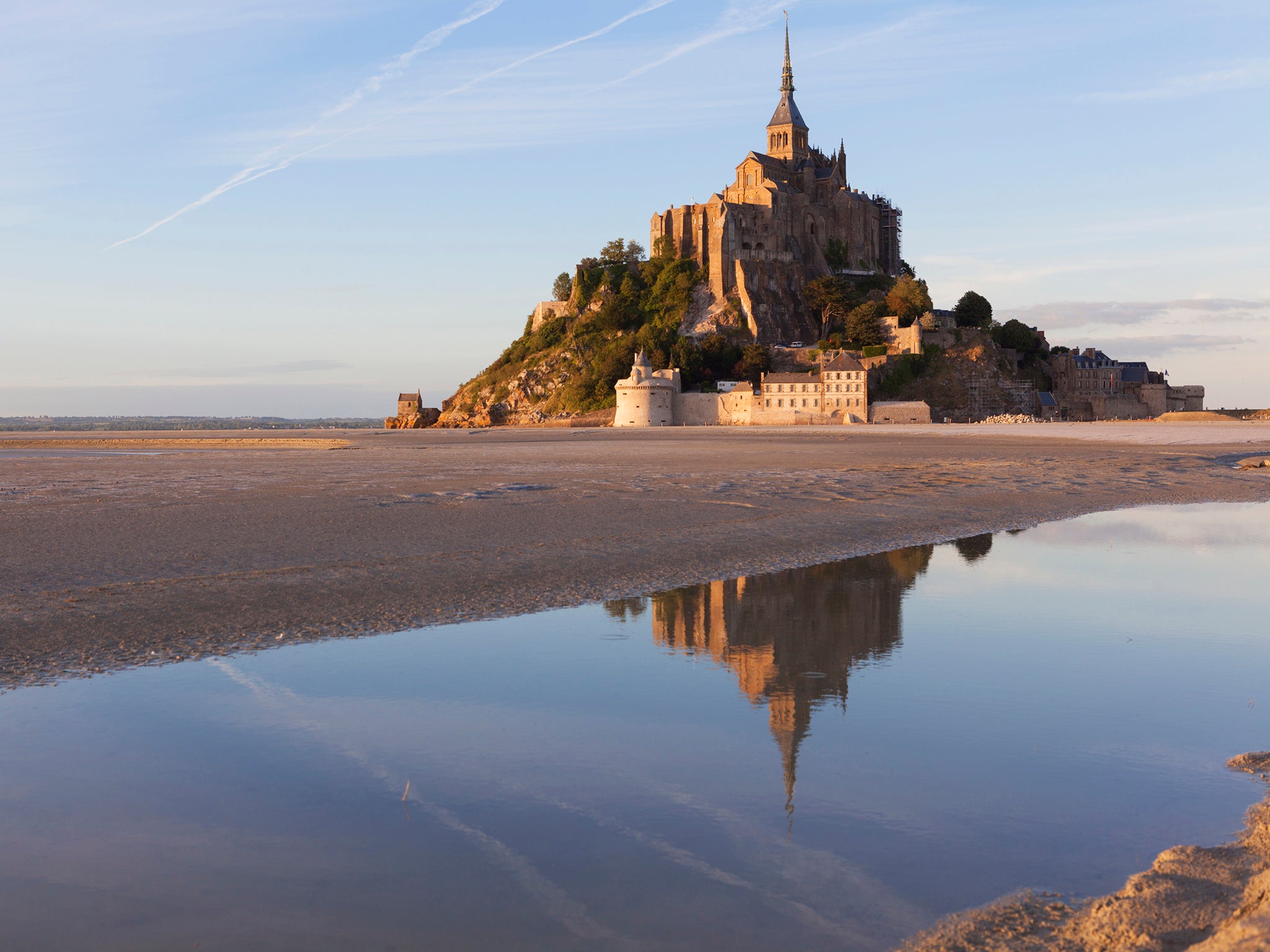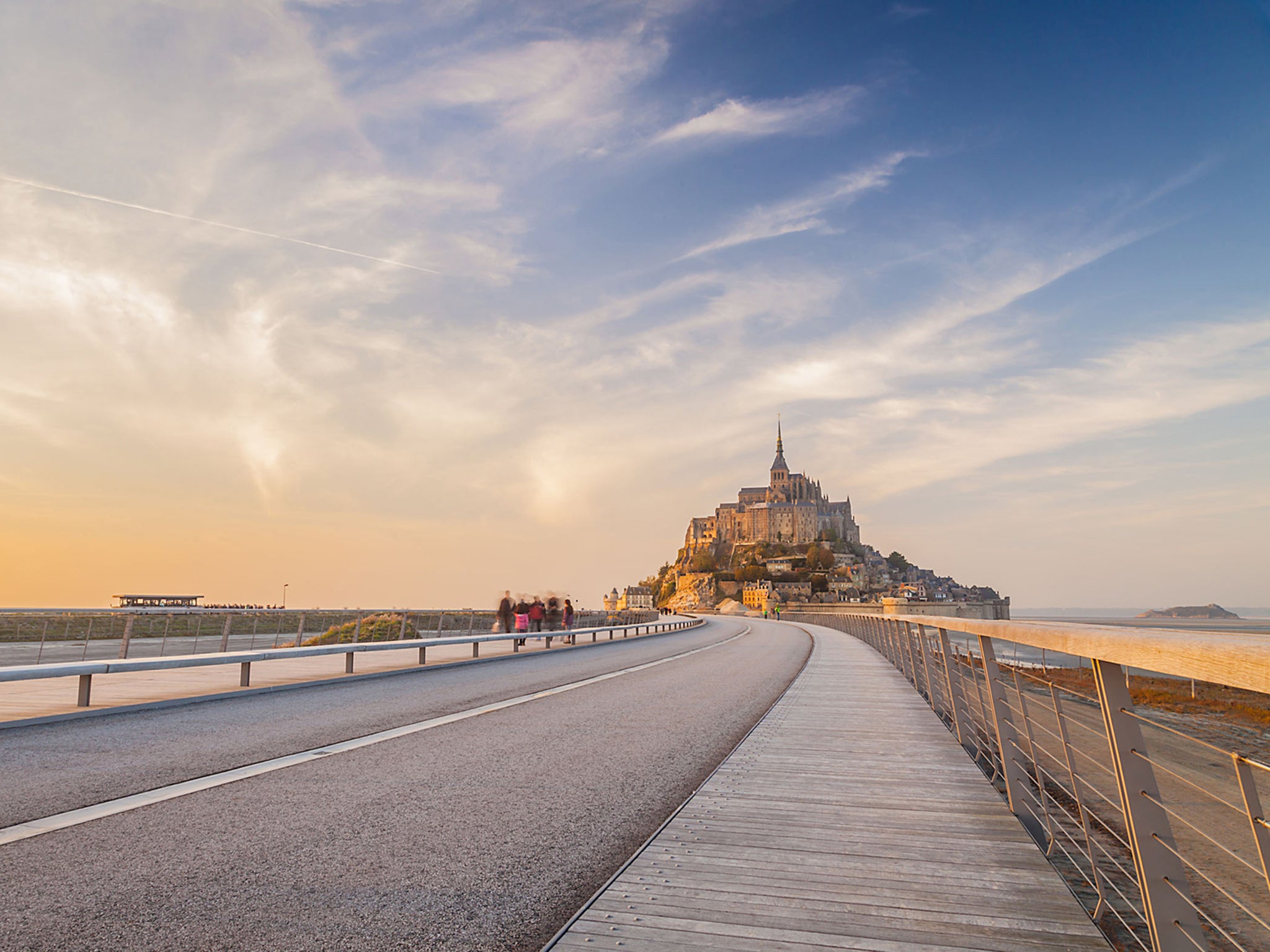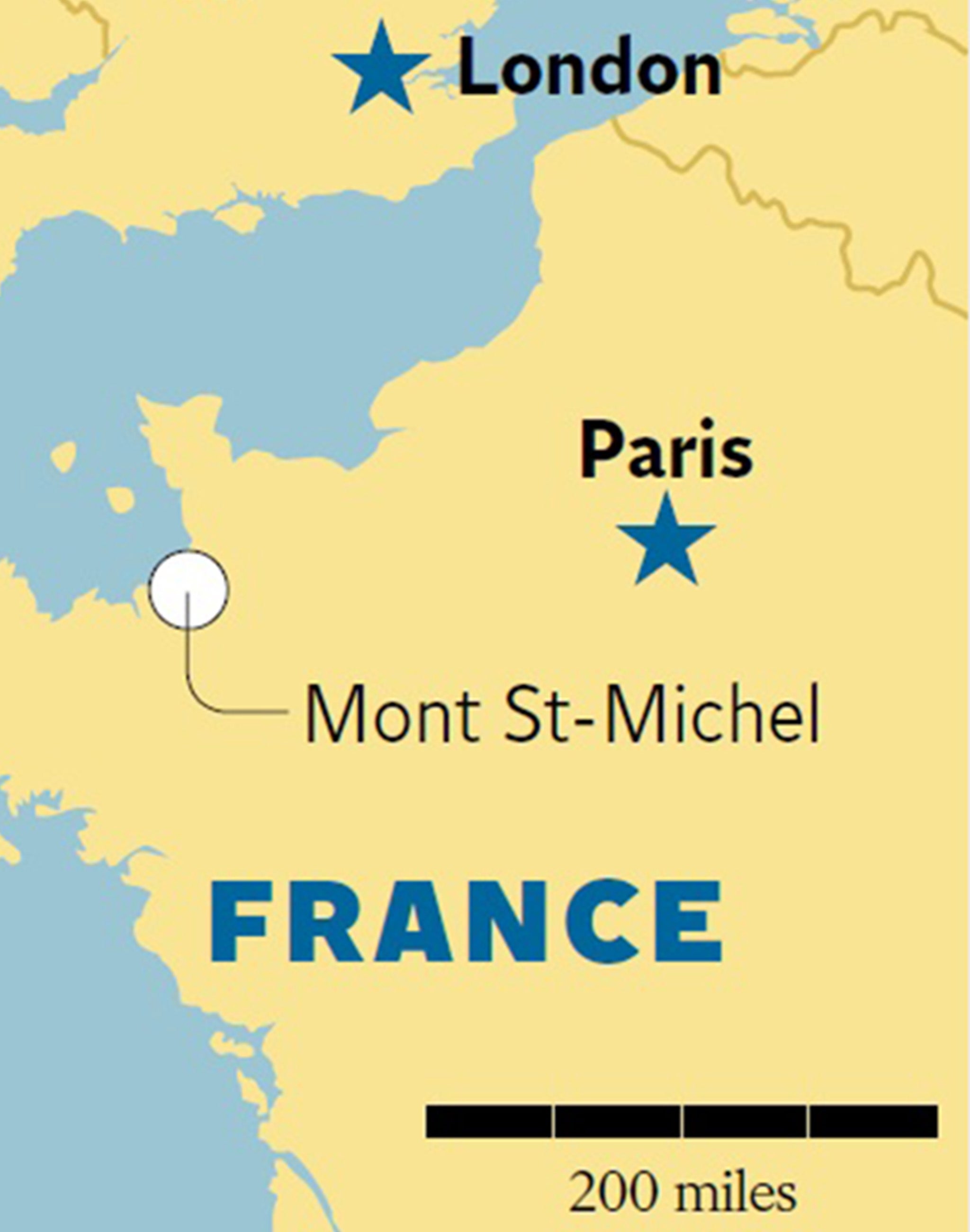Trail of the unexpected: French disconnection in Mont St-Michel
The removal of a causeway will let the tides work their magic on the island, says Nick Rider

“How do you tell where the path is?”, I asked Bertrand, my guide across the Bay of Mont St-Michel. “You can’t,” came the answer, “you look at the water, at the sand … you have to know what to look for.” We had been walking out from the beach for half an hour, and I was mystified as to why we followed one patch of sand here, another there. “There are no paths”, he grunted, “it changes all the time.”
This was a moment of revelation. I had long heard of the traversée, or walk, to Mont St-Michel along old “pilgrims’ paths”, but naively assumed this meant some sort of recognisable path, perhaps some solid ground. Completely wrong. At times it felt like we were walking straight into the open sea. Only a short distance from cosy résidences sécondaires and one of the world’s great tourist attractions, we were in a trackless wilderness of shifting marsh, sand and water. Navigating through it is a matter of intimate knowledge and constant awareness. Without Bertrand, a man not so much weatherbeaten as a strap of leather in human form, I and the nine others in my group would have been utterly helpless.
Ahead of us were only two fixed points: the uninhabited but bird-filled rock of Tombelaine and, beyond it, the soaring silhouette of Mont St-Michel, less a pilgrimage destination than a giant magnet, seizing the eye from every side of its bay. The Bay of Mont St-Michel is a vast expanse of vague horizons and erratic weather that has the longest and highest tidal range in Europe, the sea retreating over 10km at low tide. This ever-changing world is shortly going to become more volatile still; this year will finally see the culmination of a 20-year programme to “restore the maritime character” of the area. Silting up in the bay had accelerated since a causeway was built to the Abbey in the 1870s, threatening to swallow the mount into the marshes. Now, a new dam on the once-blocked River Couesnon allows the river to flow out as the tide falls, flushing sediment away naturally.

An elegantly curving modern bridge, inaugurated last year, provides access to the Mont, and this spring and summer the causeway and the ugly carparks at the foot of the Abbey will be cut away. Patrick Morel, head of the Projet Mont St-Michel, is wary of giving a final end-date, but some time later this year, a grand inauguration will attract the world’s attention back to the region. The first cuts in the causeway have already had an impact, allowing the Couesnon to flow out around both sides of Mont St-Michel and making it “an island once again” during the highest tides each month. During the exceptional spring tides prompted by this year’s solar eclipse, on 21–22 March (the marée du siècle), the waters even lapped up over the sides of the bridge, cutting the Mont off from the mainland for the first time in over 150 years.
Drawing five million visitors a year, Mont St-Michel really is one of the most extraordinary places on earth. Built not on top of an isolated rocky outcrop in the bay but above it, around four massive granite columns completed in 1058, Mont St-Michel combines aspects of religious sanctuary, magicians’ lair and fortress. Its immense verticals, labyrinthine chambers and silhouette rising from the waters have become an essential of Gothic fantasy imagery, plundered time and again from 19th-century novels through to Emperor Ming’s citadel in Flash Gordon and the videogame, Assassin’s Creed. The best way to retrieve its magic is by approaching it in the oldest way of all – on foot. Medieval pilgrims regarded the walk over the sands as a test of faith (although no one should ever try this without a guide, even on the brightest summer day).

I made the walk with Chemins de la Baie, one of the guiding operations based in Genêts. The village is the final point in the Chemin aux Anglais, the main trail for English pilgrims to the mount. The full traversée covers about 14km and takes about five and a half hours to complete, there and back. Barefoot, and in shorts, we set off at a brisk pace, to make the most of the tide window. Along the way, Bertrand stopped frequently to point out the grazing sheep that produce the Bay’s celebrated salt-marsh lamb, birds, herbs like rice-grass and samphire. The greatest attraction, though, is the exhilaration of being in such an otherwordly environment. At one broad stretch of water we huddled p enguin-like on a sandbar while Bertrand paddled across to feel out a path, sometimes up to his waist.
The changes unleashed by cutting the causeway will naturally also affect the guides and their walks. Tides will be higher and faster, the sand flats still less predictable. Not that this will make anyone give up, for deciphering this shifting landscape is essential to the traversée’s fascination. One of my fellow walkers, Jean, told me he’d made the walk five times, in – as a salt-spray blast hit us – “much worse weather than this”. “And”, he added with an emphatic gleam, “every time has been different – it’s never the same, never.”
Travel Essentials
Getting there
The writer travelled with Brittany Ferries (brittany-ferries.com), which sails between Portsmouth or Poole and Cherbourg, St-Malo, Caen and Le Havre.
Visiting there
Chemins de la Baie, Genêts (00 33 2 33 89 80 88; cheminsdelabaie.com). The walking season runs from the April to October, with a restricted schedule in winter. From €7.20pp.
Staying there
Clerval (00 33 6 46 17 75 13; montsaintmichel-clerval.com). A B&B just north of Genêts offering rooms from €75 including breakfast. Villa Saint-Jean (00 33 2 33 60 83 91; villasaintjean.com). A B&B with views across the bay. Doubles from €76 with breakfast.
Eating and drinking there
Chez François (00 33 2 33 70 83 98; chezfrancois.fr). A cave-like village bistro, ideal for recovery after a walk on the bay.
More information
Join our commenting forum
Join thought-provoking conversations, follow other Independent readers and see their replies
Comments